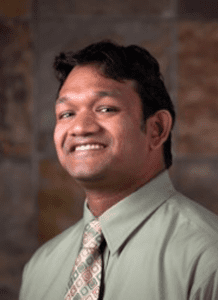Embargoed for Release
Thursday, October 19, 2017
11:00 a.m. U.S. Eastern Time
Media Contact:
Nalini Padmanabhan
ASHG Director of Communications and Marketing
301.634.7346
press@ashg.org
Findings Reported at ASHG 2017 Annual Meeting

BETHESDA, MD – Rapid whole-genome sequencing (WGS) of acutely ill neonatal intensive care unit (NICU) patients in the first few days of life yields clinically useful diagnoses in many cases, and results in lower aggregate costs than the current standard of care, according to findings presented at the American Society of Human Genetics (ASHG) 2017 Annual Meeting in Orlando, Fla.
Shimul Chowdhury, PhD, FACMG, Clinical Laboratory Director at the Rady Children’s Institute for Genomic Medicine, and his colleagues focused their analysis on a broad swath of NICU patients for whom a genetic diagnosis might help inform treatment decisions and disease management. They studied the clinical utility and cost-effectiveness of sequencing infants and their parents.
“Newborns often don’t fit traditional methods of diagnosis, as they may present with non-specific symptoms or display different signs from older children,” said Dr. Chowdhury. In many such cases, he explained, sequencing can pinpoint the cause of illness, yielding a diagnosis that allows doctors to modify inpatient treatment and resulting in dramatically improved medical outcomes in both the short and long term.
Because of the potential for early intervention and immediate adjustment in care, the researchers used a rapid WGS procedure that took three to seven days from sample collection to delivering results to patients’ families. The process can be further accelerated if medically necessary. In contrast, most clinical diagnostic tests take four to six weeks.
In 34 (35%) of the 98 patients enrolled in the study, WGS yielded a genetic diagnosis, and in 28 (80%) of those patients, that diagnosis led to changes in medical management, such as the use of medications targeted to the underlying disease, avoidance of unnecessary surgery, and guidance about palliative care. Cost-effectiveness analyses are ongoing, but among the first 42 infants sequenced, the researchers calculated a $1.3 million net cost savings for that hospitalization versus the current standard of care.
“The cost savings were especially striking, given that sequencing costs are still high – even with those costs, we found that rapid WGS was not just clinically useful but economically prudent,” Dr. Chowdhury said. “Given these benefits, we’d eventually like to see rapid WGS as a reimbursable first-tier test for a proportion of infants in the NICU.”
Currently, the researchers are looking to expand their study and assess the effectiveness of their approach across health systems and populations. This summer, they launched partnerships with children’s hospitals in California and Minnesota, an effort that will involve scaling up the rapid WGS process to meet demand and yield new insights about its clinical utility, cost-effectiveness, and ease of implementation in different environments.
Dr. Chowdhury noted the important contribution of genetics research to their progress so far. “Translational research leading to improvements in the speed and accuracy of sequencing tests is so important to our work, and has a real impact on patients and their families,” he said.
Presentation:
Dr. Chowdhury will present this research on Thursday, October 19, 2017, from 11:00-11:15 a.m., in Room 330C, Level 3, South Building, Orange County Convention Center.
Press Availability:
Dr. Chowdhury will be available to discuss this research with interested media on Thursday, October 19, 2017, from 2:30-3:00 pm in the ASHG 2017 Press Office (Room 210D).
Reference:
Chowdhury S et al. (2017 Oct 19). Abstract: Clinical utility and cost effectiveness of rapid whole genome sequencing in the neonatal and pediatric intensive care unit. Presented at the American Society of Human Genetics 2017 Annual Meeting. Orlando, Florida.
About the American Society of Human Genetics (ASHG)
Founded in 1948, the American Society of Human Genetics is the primary professional membership organization for human genetics specialists worldwide. Its nearly 8,000 members include researchers, academicians, clinicians, laboratory practice professionals, genetic counselors, nurses, and others with an interest in human genetics. The Society serves scientists, health professionals, and the public by providing forums to: (1) share research results through the ASHG Annual Meeting and in The American Journal of Human Genetics; (2) advance genetic research by advocating for research support; (3) educate current and future genetics professionals, health care providers, advocates, policymakers, educators, students, and the public about all aspects of human genetics; and (4) promote genetic services and support responsible social and scientific policies. For more information, visit: http://www.ashg.org.
9650 Rockville Pike | Bethesda, MD 20814 | 301.634.7300 | society@ashg.org | www.ashg.org
Connect with ASHG on Twitter (@GeneticsSociety) | Facebook | LinkedIn
